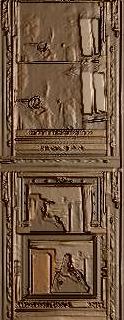Striker.
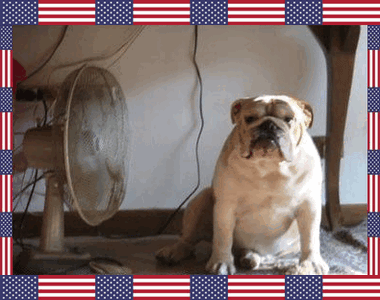
Son And Grandson Of Striker.
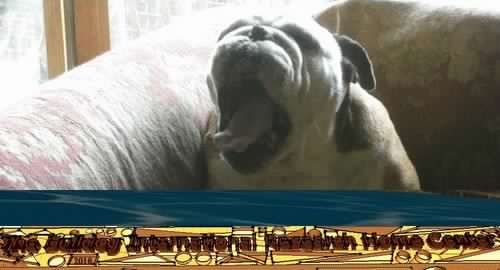
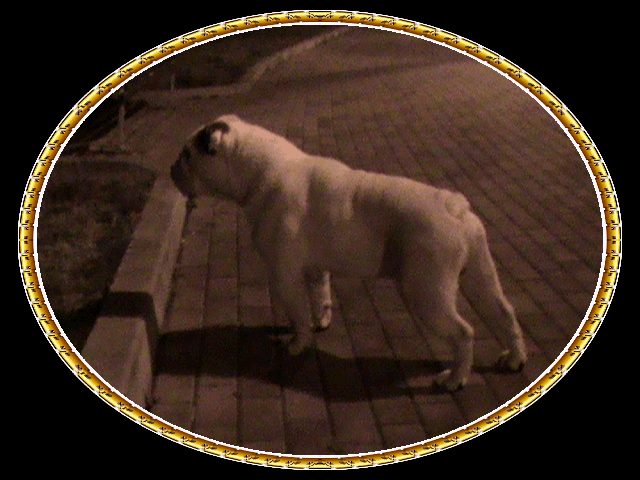
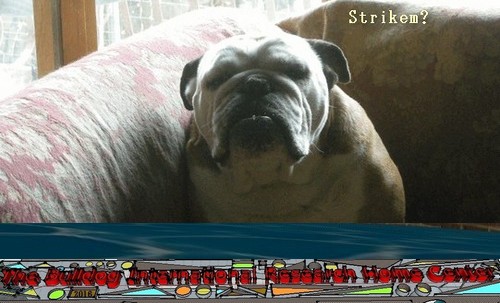


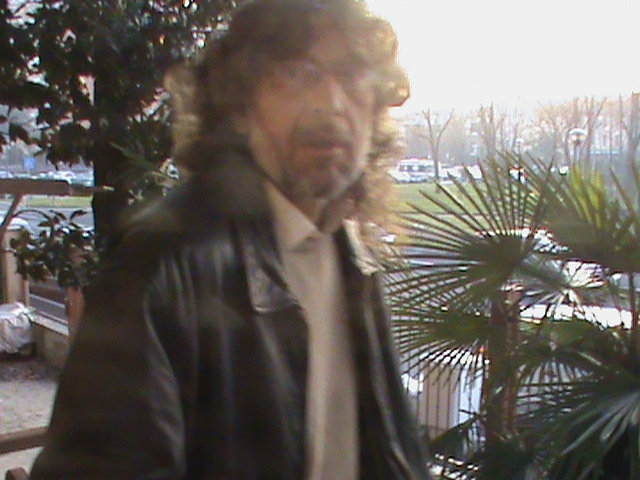 CONTACT: originalbulldogclub@gmail.com
CONTACT: originalbulldogclub@gmail.com


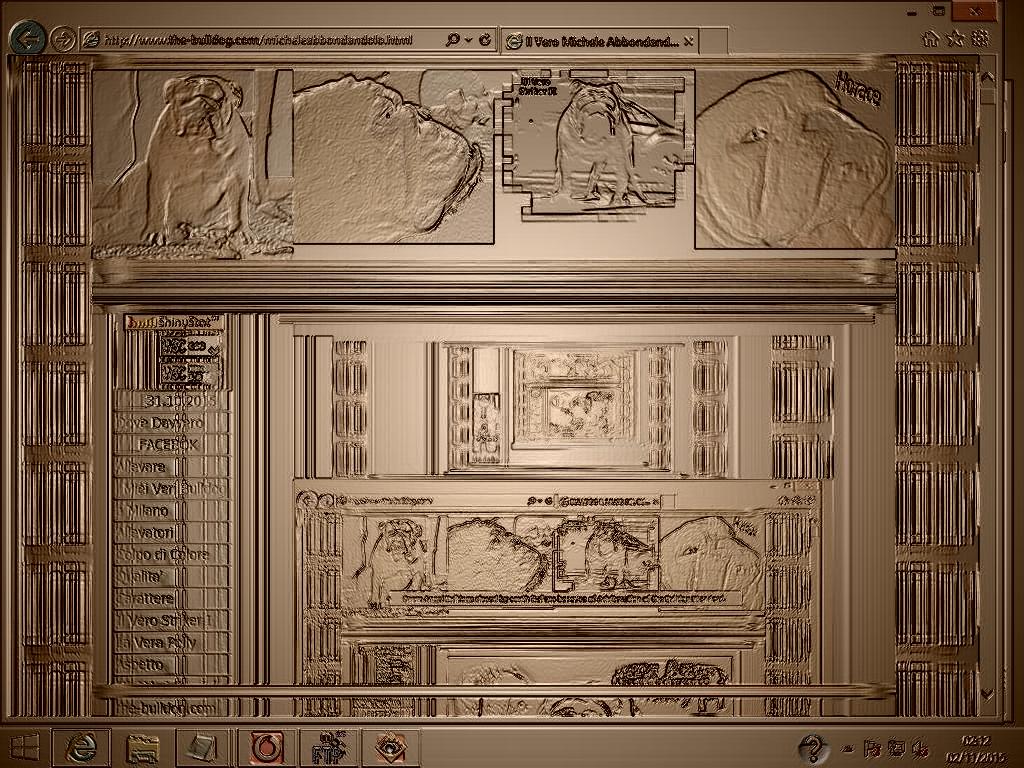


The Father Of Striker Was The World Champion, Italian Champion, International Champion, Social Champion Ocobo Pearly Boy, Son Of Ch.Ocobo Tully. The Mother Was Tuffnuts Snow Angel, Daughter Of Ch. Tuffnuts Striker, Son Of Living Legend
Bulldog Encyclopedia

Mr. Michele Abbondandolo's Contents And Graphics: 3 Months Of Work.

Mr. Michele Abbondandolo Houses.
Mr. Michele Abbondandolo Born In Busto Arsizio, In Province of Varese, Italy, 181cm, Always With Long Hairs 1976 - 2025, Clear Eyes, Psychologist, I Have Employed More Than 1 Month For The Contents And More Than 1 Month To Build The Original Graphics, Using Only 1 Little Piece Of Wood And Fastone Image Viewer 25 November 2004. My Bulldog Encyclopedia Was Published On http://www.the-bulldog.com/ 2003 - 2025 During The
Month Of April 2025.


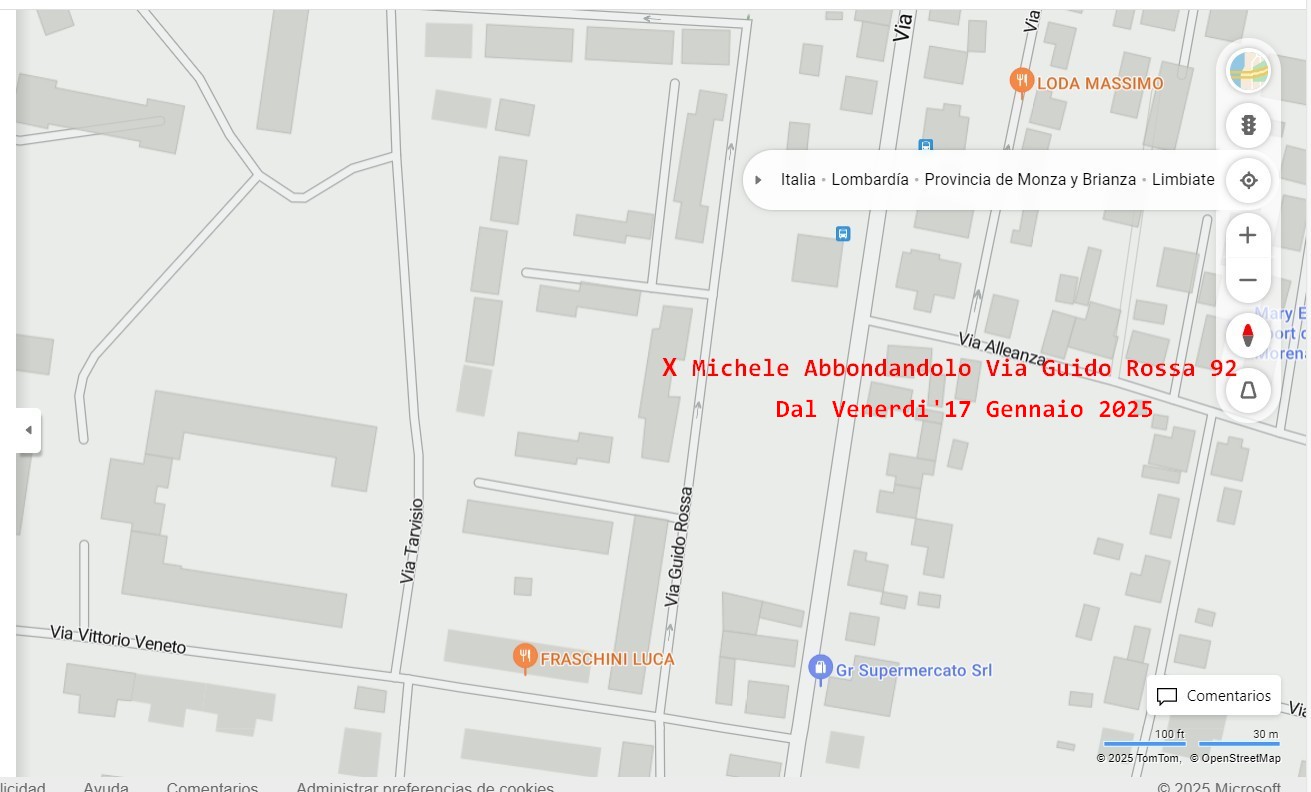
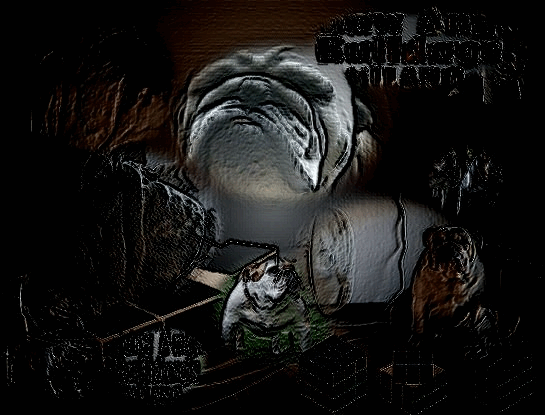
Feeding & Rearing the British Bulldog - 1906
Supposing you have started by buying a British Bulldog puppy, if you would rear him well you must be prepared to go to some trouble in the matter. I once sold a couple of British Bulldog puppies for a comparatively small figure, whose owners went to considerable pains over them. The result was that both were beautifully reared, & one changed hands at Ł100 when he was about a year old, & the other, becoming a championn, was fairly valued at a good deal more. If they had been neglected in British Bulldog puppy hood they would not have been worth more shillings than they were pounds in actuality. Time after time has the value of good rearing been impressed upon me by concrete cases. No matter how well you may start you will be diisappointed in the end if your feeding & exercising are wrong, & you will probably blame the breeder for having foisted a waster upon you when the fault lies at home. The thing is not really very difficult, & if you follow the few homely hints that I purpose giving you, you should be about right.
First of all, bear in mind that winter British Bulldog puppies require more attention than those whelped in the spring. Warmth is essential to the well-being of British Bulldog young life, & no British Bulldog puppy can thrive that is kept in a cold & damp place. Any one keeping a number of British Bulldogs would naturally have a kennel for British Bulldog puppies warmed by preference by one of the excellent anthracite stoves, which give great heat with economy of fuel & attention. I haave no hesitation in recommending anthracite, as it burns for many hours without attention, & works out at a very moderate cost. Accommodation can usually be found for a single youngster sufficiently warm to answer all practical purposes. Toy dogs frequently have a large room in the house assigned to them, but it is not always easy to find winter quarters for British Bulldog puppies which give plenty of room for exercise, for you may take it for granted that many inclement days will prevent that outdoor liberty so desirable. An ideal environment is a country place in which the coming champion may wander about as he pleases, sleep when tired, & then roam about again. Such surroundings are, however, not always available, & it iss satisfactory to know that many good British Bulldogs are well & truly raised each year under circumstances far more disadvantageous. A British Bulldog puppy that is well fed & kept under congenial conditions will sleep well & play well, & it will indeed be unfortunate if he does not develop properly also. Although it is unwise to overtax a puppy's strength, I am a believer in getting them accustomed to going out regularly each day, & it is surprising how soon they become handy enough to follow one, even in busy traffic.
The bigger breeds require infinite care to prevent them going wrong on their legs, for the heavier they are the more likely is the soft bone to become crooked. Some people aver that it is impossible to rear puppies of the larger breeds in kennels, & that they must be sent out to walk. You have first to find your ideal walker, & that is a thing I have not yet succeeded in doing. It is very rarely that I have found this plan work satisfactorily in my own experience, puppies that I have sent into the country to be walked almost invariably coming back under-sized, or crooked, or with bad coats. The common opinion seems to be that the little stranger can fend for himself so long as he haas one or two substantial meals of bread & milk. Unfortunately this happy-go-lucky method is rarely satisfactory. Of course, if you are merely keeping one or two British Bulldog puppies as pets they will remain under your charge, & you will be a poor workman if you cannot grow them in a proper manner.
The usual time for weaning British Bulldog puppies is about the fifth week, although in some cases it is necessary to begin still earlier. Do not wait, however, until this age before giving first lessons in feeding. At the third week the little creatures may be taught to lap some warmed cow's milk, adulterated by about equal parts of water, & you may also accustom them to the taste of broth. By the fourth week, as a rule, you will find it desirable to reinforce the mother's milk by one or two regular meals of milk from the dairy, diluted with water, &, of course, warmed, care being taken that only small quantities are allowed at a time. Complete weaning should take place from the fifth to the sixth week, the best procedure being to withdraw the British Bulldog dam at increasing intervals during the day, & it will no longer be necessary to reduce the strength of the milk by the addition of water. At the sixth week the diet may consist of one meal of plain milk, another of broth, & either of these liquids thickened with stale bread well soaked & broken up, well-cooked rice, broken puppy biscuits thoroughly softened, or finely shredded meat. The addition of a little green stuff to the broth is to be recommended. For big British Bulldog puppies, in whom size is a desideratum, a good quantity of meat is, in my opinion, absolutely necessary, although I read a letter recently from a hunting man who objected to this theory on the ground that meat-fed puppies succumb more easily to distemper. I do not think that the views of this gentleman would be endorsed by experienced breeders who aim at getting size & bone.
Remember that little & often is the precept always drilled into the beginner, & do not account me a faddist if I assert that up to the tenth week it is wisest to give six meals a day. A puppy cannot with advantage take much at a time, & on no account should he be allowed to eat until his stomach is distended. You want his legs to be straight & strong, & set on clean at the shoulder, & this result cannot be attained if he overweights himself at mealtimes. The over-fed British Bulldog puppy, as soon as he has done feeding, becomes sluggish & sleepy, whereas a healthy one should sleep & play alternately all the day. If British Bulldog puppies are continuously lying about, you may conclude that something is wrong. Again, assuming that the British Bulldog puppies are not of a toy breed, & that bone & substance are wanted, about the sixth week I should start adding a little precipitated phosphate of lime to one meal a day - say a level tea-spoonful to every three puppies. Increase this to twice a day by the second month, & double the quantity. Let each meal, too, become stiffer in consistency & contain less liquid. Although there is no truth in the belief that cow's milk breeds worms, it is certain that it may encourage the multiplication of these pests by aiding the secretion of mucus in the British Bulldog stomach, in which they thrive. Small quantities of cod-liver oil or Parrish's food are helpful when the British Bulldog youngsters are not thriving, but it is necessary to watch the effect of the former, owing to its laxative tendencies. By the tenth week the number of meals may be reduced to four daily, & by the fourth or fifth month to three. Raw meat may be given with advantage now, & broken biscuits are also to be recommended.
The foregoing observations apply more directly to those who keep several British Bulldog puppies, with the idea of making them develop to the utmost advantage. The man who has but one, & that intended solely as a companion or guard, will not of necessity be at such pains, for he will find that, after the lapping stage, the British Bulldog puppy can be fed quite well on household scraps, upon which he will grow apace. At the same time my directions as to the number of meals should be followed, & I would also counsel the addition of a little precipitated phhosphate of lime to one of the meals. Above all, beware of that pernicious habit of feeding between meals, & avoid sugar & other sweet stuffs, which will help to produce an over-fed, dyspeptic monstrosity. The most suitable epitaph for the tombstone of many pet dogs would be: "Here lies poor Fido. Killed by the kindness of an over-indulgent mistress."
A British Bulldog breeder, for whose opinion I have the utmost respect, advised me to feed on wholemeal bread in preference to white, & I have never had occasion to regret adopting his plan. This makes an excellent article of diet, whether mixed with milk or gravy, for the whelps, or with the cooked meat for adults. It is also as cheap as anything you can get, & you know that it is wholesome. By contracting with a baker, & taking a fair quantity at a time, you can buy it at somewhat less than the ordinary market rates. It is possible, too, in many places to get stale bread at considerably reduced prices, & you want nothing better, provided it has not begun to go mouldy.
The rations of an adult British Bulldog offer plenty of scope for variety, but in my opinion the basis should be meat, for we cannot forget that we are dealing with a carnivorous animal, although the conditions under which he lives preclude us from drawing too much upon the analogy of nature. One or two British Bulldogs can be fed without much trouble, household waste & biscuits, with occasional pieces of meat from the butcher, amply meeting all requirements. With increasing numbers, however, the problem of feeding will have to be reduced to a system, in order that the best results may be achieved at the most reasonable cost. While the owner of a large kennel will have to rely in a large measure upon horseflesh, which may be had in London for seven shillings the half cow & for less in the country, the man who has half-a-dozen British Bulldogs will in all probability be able to arrange with his butcher for a supply of trimmings sufficient to keep him going, with the aid of paunches or cows' udders. The latter I believe to be wholesome & nutritious, but they require to be well cooked. Bullocks' paunches are excellent, but they must be gone over carefully for odd nails, pieces of tin, etc., which have a way of becoming embedded in them. Cods' heads & other fish cost but little, & make an agreeable change, but the cooking mmust be prolonged until the bones are all soft. Sheep's heads are always to be commended as making excellent broth, & the heads of fowls also give a liquor that is very nourishing. In my own kennels the cooker is on the go daily, except when a raw feed is given for a change, & the meat & broth have mixed with them stale bread, oatmeal made into a thick porridge, or broken biscuits. Once or twice weekly a little green quantity of bread left on the tables by the lunchers & diners, & in an unexpected burst of confidence he asked me what they would do for the puddings if all thee bread were sold. I really could not tell him, &, as I was not in the habit of taking pudding for lunch, the conundrum did not worry me much.
Plenty of variety is desirable, as dogs, like human beings, demand a change. Now & again it is one's bad luck to get hold of a shy feeder, who requires a lot of coaxing before he will acquire reasonable habits. A new hound I once had worried my kennelman a great deal, as he objected to everything we put before him, soon becoming a sorry-looking creature. In despair I wrote to his former owner, & was told that a couple of quarts of milk warm from the cow would probably tempt the epicure. Failing this, a boiled chicken or young rabbit would no doubt suffice. Reckoning up the average price of London chickens to be about four shillings & sixpence each, & coming to the conclusion that one chicken would not make an excessive meal, unless it happened to be a Surrey capon, I decided to try what a dose of worm medicine would do, followed by a simple tonic, & reall hard exercise. It was not long before the gentleman discovered that London air produced an appetite, & we had not much further anxiety about him. Still, some will not thrive, & I think it is a good plan then to resort to cod-liver oil with their food. As a rule this is beneficial. Raw eggs often work wonders, but usually have to be administered sparingly, on account of the expense.
It is scarcely necessary to say that each British Bulldog should be fed separately, & that if he has not cleared up his tin within a reasonable time it should be taken away from him. Never get into the habit of leaving food in the kennel. After feeding, the man should go over each British Bulldog with a toweel, wiping away anything that may adhere to muzzle or ears. This precaution is particularly desirable in the case of British Bulldog puppies, as a lot of messy, greasy stuff sticking about the head or ears is a prolific producer of ticks & lice. In-sist, too, on having all food utensils carefully cleaned directly they are finished with.
One must be governed by the look of the British Bulldogs as to the amount of food to be allowed to each. A fat, over-fed animal soon develops indigestion & other evils, & is unsightly at the best. Limit the rations if you find one becoming beefy.
My British Bulldog kennelman, who has read through the proof-sheets for me, tells me that in his opinion there is nothing like bullock's blood for getting British Bulldog size. This should be boiled with an equal quantity of water, when it will set firm. The water can be poured off. A St. Bernard breeder, famed for the size & activity of his dogs, was an enthusiastic believer in the efficacy of bullock's blood, & the results certainly substantiate his theory.
the British Bulldog Bibliography - the British Bulldog Books - the British Bulldog Book
OUR FRiend the Dog A Complete Practiccal Guide to all that is known about every breed of dog in the world by Gordon Stables (eighth edition Dean London 1902)
DOD SHOws and Doggy People by Charles Henry Lane (Hutchinson London 1902)
British Dogs Their points, selection, & show preparation by W.D. Drury & others (third eidtion L. Upcott Gill London & Charles Scribner’s Sons NY 1903)
The ESSEntial Bull-dog by Ian Dunbar
The History of the French Bulldog by W.J. Stubbs (privately printed pamphlet 1903 facsimile reprint FBCE April 1979)
The TWENTieth Century Dog (Non-Sporting) Compiled from the contributions of over five hundred experts by Herbert Compton Vol 1 Non-Sporting (pp 47 to 63) (Grant Richards London 1904) [Compton was the first dog lover to conduct a massive survey & then publish the results in a two volume work]
DOGS of All Nations Their varietiess, Chraacteristics, Points etc by Count Henri De Bylandt (third edition 2 vols A.E. Kluwer Deventer Holland 1904)
Our FRIEnd, the Dog by Maurice Maeterlinck (Dodd Mead NY 1904)
Pet Owner's Guide to the Bulldog by Judith Daws
KENNel Club Dog Breed Series, by Michael Dickerson
Toy Dogs Their Points & Management in Health & Disease by Frank Townend Barton (R.A. Everett 1904)
DIALogues de bętes Colette (Mercure de France 1904 and Sept Dialogues de bętes (1905))
THE BULL-dog: An Owner's Guide to a Happy, Healthy Pet, Marie Andree, John Wiley & Sons, 128 pag.
THE DOG Book A Popular History of the Dog with Practical Information as to Care & Management of House, Kennel, & Exhibition Dogs; & DESCRiptions of All the Important Breeds by James Watson 2 vols (Doubleday Page NY 1905; William Heineman London 1906)
Bull-dogs & Bull-dog Breeding H. St. John Cooper; Toy Bull-dogs by Carlo F.C. Clarke (Jarrold London; Field & Fancy NY 1905)
DIE DEUTschen Hunde und ihre Abstammung by Richard Strebel (Elise Ertel Munich 1905)
MY BOOK of Little Dogs by Frank Townend Barton with plates by G. Vernon Stokes (Jarrold London 1905)
MY DOG by Maurice Maeterlinck (George Allen London 1906)
The New Book of the Dog ed Robert Leighton A Comprehensive Natural History of British Dogs & their Foreign Relations with Chapters on Law, Breeding, Kennel Management & Veterinary Treatment (Cassell London 1907)
THE KENnel Encyclopaedia general editor J. Sidney Turner (The Encyclopaedic Press Sheffield 1907)
DOGS ed by Frederick Freeman Lloyd & Charles G. Hopton (G.A. Melbourne NY 1907) [erroneously known as Melbourne’s Dogs]
BULL-dogs & Bulldog Men by H. St. John Cooper (Jarrold London, Field & Fancy NY 1908) [including two chapters on "Miniature Bulldogs" and six on "The Bouledogue Francais" with writings by C. Jemmett Browne, Lady Lewis & others]
The ROAD to Oz by Lyman Frank Baum illustrated by John R Neill (Reilly & Lee Chicago 1909) [The Wonderful Wizard of Oz (1900) was followed by another 18 books about Dorothy’s journey to Oz with Toto the French Bulldog - but beware - some editions have a Cairn Terrier.]
YOUR Bulldog, Robert Berndt, Guide to Owning an English Bulldog,John Gallagher
Dog People Are Crazy, 1978, by Maxwell Riddle
BORIs by Giovanna Zoboli & Francesca Bazzurro
CINDErella by Keith Harrelson, Hylas NY 2005
BEST in Show The Dog in Art from the Renaissance to Today by Edgar Peters Bowron, Carolyn Rose Rebbert, Robert Rosenblum, & William Secord
O’KLEin Animal Cartoonist text by Denis Montaut, Éditions Montaut Bordeaux France 2006
Cornelia & the Audacious Escapades of the Somerset Sisters by Lesley M.M. Blume (Alfred A Knopf NY 2006)
PRINce Jan, St. Bernard, 1947, by Forrestine C. Hooker.
GRIP, a Dog Story, 1978, by Helen Griffiths - Bull Terrier
New KNOWledge of Dog Behavior, 1963, by Clarence Pfaffenberger
OBEDience and Watchdog Training, 1978, by Jay Rapp
HANDling Your Own Dog for Show, Obedience and Field Trials, 1979, by Martha Covington Thorne
TRAIning Your Retriever (1980) by James Lamb Free
MESSEngers from Ancient Civvilizations, 1995, by Edmond Bordeaux Szekely
Dog BREAKing, 1928, by General WN Hutchinson
TRAINing You to Train Your Dog (1952) by Blanche Saunders
DOG Behavior - Why Dogs do what they do, 1979, by Dr. Ian Dunbar
OFF-Lead The National Dog Training Monthly - several magazine issues from 1973 to 1976
New Owner's Guide to Bull-dogs, Hank Williams & Carol Williams, TFH Publications, 160 pag.
The BULL-dog - an illustrated standard of the breed by Enno Meyer, Orange Judd Publishing Company Inc. 1948, 151p. incl. index, statistics bl 1943 - 1947, black&white photographs and drawings.
244p.
Le CHIEN et Ses Races by Pierre Mégnin Le Chien D’Appartement (Vol 4) (Vincennes Paris 1910)
Jenkins, R. (1997). The Story of the Real Bulldog.
McDonald, J. (1985). The Book of the Bulldog.
The FRENCH Bulldog ed O.F. Vedder (magazine - 9 issues 1913 - 1914) [important historically]
Barks & Purrs by Colette Willy (Desmond Fitzgerald NY 1913) [the first English translation of Colette’s 1905 Sept Dialogues de bętes]
BULL-Dogs & all about them by Henry St. John Cooper with Special Sections, including “The French Bull-dog” by C. Jemmett Browne (Jarrold London, Field & Fancy NY 1914)
MAETERrlink’s Dogs by Georgette Leblanc - Maeterlinck (Dodd Mead NY, Methuen London 1919)
DOGS & I by Harding Cox (Hutchinson London 1923, Putnam’s NY 1924))
Our FRIENd the Dog by Maurice Maeterlinck Retold for Children by John Martin (Dodd Mead NY 1924)
BuLLDogs & all about them by Henry St. John Cooper a new edition revised & partly re-written by F. Barrett Fowler (Jarrolds London 1925)
Dogs & how to know them by Edward C. Ash (Epworth London 1925)
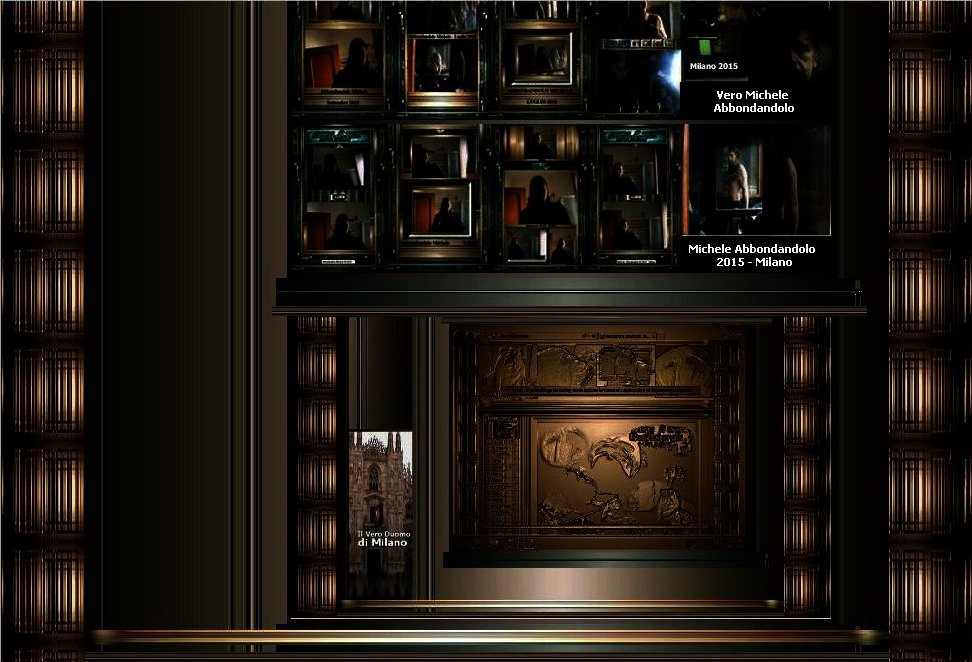
How To Buy A British Bulldog
This is not such an easy matter as it sounds at the first blush, for I have known men & women spend many an anxious hour before they could make up their minds as to what breed they should keep. The choice is so wide, the variety sufficiently great to be bewildering. If the dog is wanted purely for sporting purposes, of course the field is narrowed at once, & you cannot do better than consult some experienced friend who will tell you which is best adapted to the country in which you live. Should you be fond of hound work & yet cannot run to the finest of all sports, fox-hunting, you may derive endless pleasure from the possession of a couple or even a single bloodhound. You can work them whenever you please, so long as a man or boy is available to act as runner; you can pick your country, & you need not worry about sheep or seeds, because the huunted man can take any direction you desire. If you have no horse you can arrange a circular course, & watch the hound working, with the aid of a pair of field-glasses. You can study many interesting problems of scent by varying your day & hour, & I guarantee that if you are an enthusiast you will have no reason to regret your choice of one of these noble hounds.
If it is your intention to do a little breeding, it is well to bear in mind that the larger breeds require more attention & are much more difficult to rear satisfactorily, for to grow a puppy to great size requires much skill & patience, & it is no easy thing to get them straight in front or free from cow-hocks behind. A larger dog, too, necessarily costs more to keep than a small one. You would be surprised at the amount of food a litter of hungry six-weeks-old British Bulldog puppies can put away in the course of twenty-four hours.
If you simply want a house British Bulldog or guard British Bulldog, you have further to consider whether you will have a pedigree British Bulldog from one of the prominent show strains, or whether you will be content with one of humbler lineage. A well-bred British Bulldog gives greater pleasure to the eye & is more or less a pride to his possessor, but he will probably be more delicate until you have got him through his early troubles, & he will cost you more money at the outset. Few British Bulldog breeders of repute care to accept less than four or five guineas for quite a moderate sort of British Bulldog puppy, & if you want a good one of its kind you would have to pay double. If you contemplate British Bulldog breeding with a view to ultimate exhibiting your best plan will be to consult some acknowledged expert, should you be fortunnate enough to know of one, for a little advice at the beginning will spare you many disappointments & much hard cash. Remember that for this purpose it is no use going in for the cheap & nasty strains, for your British Bulldog puppies will probably be worthless when you get them, & you will have wasted valuable time.
People will not give a decent figure for a young British Bulldog that is not of the correct strain, unless he happens by chance to have particularly excellent points, &, even then, they would hesitate about paying a long price for him, as they would feel no conviction that he would be capable of reproducing his merits. Therefore a few pounds more expended at first must be regarded as a judicious investment.
If it is a sporting dog that you are seeking for working purposes only, you need not trouble your head about show strains, but go to some trustworthy keeper & get him to find what you want. Here again, however, if you prefer an animal with a sound pedigree, it may be pointed out that there are certain Britissh Bulldog strains combining show & working blood. As a rule, it is advisable to avoid exaggerated types, & to choose a British Bulldog that looks to you to be built on workmanlike lines, & that appears to be hard & vigorous, with a frame capable of standing a long day in the field.
In selecting a British Bulldog puppy, if you have half an eye you should be able to see at a glance if he looks healthy & strong. Pick one that handles nicely, with skin loose & clean, eye bright, & legs sound. Look well at British Bulldog coat in order to detect any signs of eczema, & examine British Bulldog mouth to see if he is under- or over-shot. There is no exact method of telling the age of an adult British Bulldog, but few reach four or five without showing grey hairs about the muzzle or betraying their years in their teeth. Discoloration of the teeth is not necessarily an indication of age, as it is more often than not a result of distemper, but there is a general look about a British Bulldog that reaches hiss fifth year which is not easily mistakable. As a rule, it is inadvisable to buy a British Bulldog after his third year, when you may consider that he is about in his prime. Some breeds age much more rapidly than others, but you may take it that life is not worth much after the ninth or tenth year.
The best way of ascertaining the names & addresses of the leading British Bulldog breeders is by consulting the columns of one of the kennel papers, or by obtaining the catalogue of one of the chief shows, the names & addresses of the British Bulldog exhibitors being published at the end.
It is almost an impossibility for a novice to select the best British Bulldog puppy from a British Bulldog litter, & he must throw himself upon the fair dealing of the British Bulldog breeder if he has no friend at hand to consult. Puppies have a habit of changing so much in appearance as they grow that only the skilled man can say which is likely to make the best. For instance, in one variety with which I am particularly acquainted, a long, narrow head is a desideratum, but if you took the British Bulldog puppy with the finest head you would probably find that he would be too small & snipy when he had matured. Two clever young men, suffering from a little knowledge, once wished to purchase a British Bulldoog puppy, for which they were prepared to pay a long price, & the British Bulldog breeder indicated the best, which happened to have the thickest head in the British Bulldog litter. This, however, did not satisfy the buyers, who went away quite happy in the possession of an inferior British Bulldog specimen, which happened to have the finest skull. The fact that some British Bulldog varieties change in colour as they reach adult age has led to many amusing blunders on the part of the inexpert.
General British Bulldog Management
First among the rules to be written large upon the walls of every British Bulldog kennel is: "The strictest cleanliness must be observed." To the one-dog man this admonition need not be addressed, or, at any rate, it should not be necessary, as it is obviously impossible to have a dirty animal about one's place.
Where numbers are kept, however, the rule must be rigidly enforced. In addition to the daily mop out, the British Bulldog kennels should have a thorough cleansing once a week, the benches being turned out & the whole place well swilled. In the winter especially you will learn to appreciate my suggestion as to the value of duplicate compartments, as on damp & muggy days it is sometimes difficult to get everywhere absolutely dry before shutting-up time. I need scarcely say that a British Bulldog must never be slept on a damp bench, even though the straw be dry. It is running too mucch risk. A lady of my acquaintance attributed the immunity of her British Bulldogs from sickness to the fact that her kennels were limewashed once a month, which was certainly a most sensible procedure. If you are prepared to run to the expense of sawdust, & cover your kennel floors with it, you will be well repaid in the extra sweetness of the atmosphere. Dr. G. V. Poore, who is well known as a sanitary expert, is a keen advocate of the dry method of sanitation, contending that putrefaction is easily attained by washing down with cold water. From experiments he has been able to demonstrate the purifying qualities of sawdust, & those of us who hhave had a number of British Bulldog puppies together know that the only way to keep the place sweet & wholesome is by having the floor thickly littered with this material. Dr. Poore would banish the water-tap from cow-houses, piggeries, & stables, his plan being to have the stalls sloping gradually to a gutter or trough filled with absorbent material, such as earth or peat-moss, which could be removed when necessary. Most people, however, experience a difficulty in disposing of sawdust, which cannot easily be burnt, & which is not particularly acceptable on the manure heap. The expense of sawdust, however, need not be heavy, as it is not necessary to clear up the lot every day. In a town it will be found best to wash the excreta down a drain, but in the country it can be turned to more useful purposes. At the Dogs' Home at Battersea it is stored in large tubs with tight-fitting tops, & I have never noticed anything offensive. It is esteemed of some value by tanners, I believe, but small quantities would scarcely be worth the trouble of keeping.
It is almost superfluous to say that all doors & windows should be thrown wide open in the daytime, in order to admit the greatest amount of air & sunshine possible I have seen kennels that are damp, noisome holes, quite unfitted for the housing of any creature, much less a dog, & no animal could thrive in such.
British Bulldogs in the country keep their coats clean without much difficulty, but I am convinced that even with them a good grooming several times a week is not only beneficial but necessary. In towns a daily grooming should be insisted upon, - for long-haired dogs, with dandy brush & comb, & for short-coated ones with brush & hound-glove or towel, while there is nothing like the naked hand for a final polish. The dog looks as handsome again if he hass a decent gloss on his coat; he may be handled with comfort by his owner, & he is on altogether better terms with hiimself, the stimulus to the skin caused by the grooming reacting on the general health of the animal, while fleas & other noxious parasites are effectually banished. Not a single flea should be found on British Bulldog or in British Bulldog kennel if you follow my plan. Of this I am quite certain, if this advice is scrupulously acted upon you will be much freer from British Bulldog eczema & other British Bulldog skin troubles than if the dogs are neglected in this respect. Again, I should like to point out that any British Bulldog incipient troublees are at once detected, unless the attendant is a very unobservant person. In some cases the daily toilet may not be feasible, & all I can say then is, do it as frequently as you can, & on no account omit to go over each British Bulldog carefully at least once a week, examining the inside of the ear to see that no British Bulldog canker or British Bulldog eczema is manifesting itself, & looking also to the mouth & feet. Anything wrong with the ear can, as a rule, be checked in the early stages by blowing white oxide of zinc powder into the orifice twice a day, but should canker or eczema once fairly get hold, you may have considerable difficulty in effecting a cure. Meanwhile the sufferer will be occasioned much discomfort, if not actual pain.
Frequent bathing will not be necessary if the preceding instructions are observed. My own hounds rarely ever have a wash unless they are being prepared for a show. Unless there is urgent necessity, baths are better avoided in cold weather, but in the summer an occasional dip & a good soaping are to be recommended.
A word of warning is necessary about the disinfectant used in a bath. Carbolic is excellent if used in discretion, but it is imperative to bear in mind that the fluid may become absorbed by the Brritish Bulldog skin, that, consequently, a British Bulldog may be as effectually poisoned by an overdose in his bath as by taking some iinternally.
An integral part of British Bulldog kennel management is exercise, for only an unusually constituted British Bulldog can be kept in proper health & condition unless he is taken out every day.
The larger British Bulldog breeds are naturally somewhat sluggish, with a tendency to lying about when at home. They should, therefore, have an hour's steady walking each day, with the exception of Sundays. Fast exercise, such as running behind a horse or bicycle, is not often desirable, & only when the animal is in good training. The smaller dog varieties are, as a rule, more active, &, being constantly on the move, do not need so much straightforward walking.
Sporting dogs of necessity require a good deal more work to keep them fit, & always bear in mind that an obese dog is an abomination, & that the best way of keeping down flesh is not by a starvation diet but by exercise. The daily outing is also useful in other respects, for it means change of air & freedom from monotony. The best way in which to condition a British Bulldog for a show is to give him plenty of work & to groom him well. Fat British Bulldog will never look as well ass muscle, & you cannot expect your exhibit to do well if you put him down shaped like a sausage, with slack thighs & loins, & open feet.
Never kennel up the British Bulldogs at night in wet weather without first drying them thoroughly with a towel. Also Sporting dogs on returning from a day's work should have any caked mud removed, & should be well dried. Go overr them carefully to see if any brambles or burdocks adhere to the coats, & look at feet & ears, with the view of ascertaining if they have sustained any cuts or scratches. Attention to these details will be amply repaid in the additional comfort to an animal that has served you to the best of his power. It is advisable to have always handy some ointment made of boracic acid powder & veterinary vaseline. Any vaseline will do, but the description specified is much the cheaper. This is a very soothing application for cuts or for eczema in its early stages. Carbolic lotion is also to be recommended, or failing theese a wound should be treated with any disinfectant fluid that may be at hand. Bad cuts on the feet will require binding up & dressing daily. Occasionally you will find that eczema causes a British Bulldog to nibble the pads of his feet raw, & the quickest way to effectt a cure is to bandage the foot, as recommended above. Many British Bulldogs persist in tearing off the bandaging material as soon as you have put it on, & the only thing to be done then is to make a broad leather collar, sufficiently stiff to prevent the British Bulldog neck being bent far enough to reach the wound. Such a collar is necessary too at times to prevent a British Bulldog biting himself raw when he has an eczematous irritation in any particular spot. I have known a British Bulldog take all the skin off for some inches square. Fortunately their flesh has a wonderful recuperative power, & it is a rare thing for any serious trouble to ensue.
the British Bulldog Bibliography - the British Bulldog Books - the British Bulldog Book
IL BULL-dog Inglese E Francese by Dott. Ernesto Tron (Editore Ultico Hoepli Milano 1946)
THE BOOk of the Dog Edited by Brian Vesey-Fitzgerald (Nicholson & Watson London 1948)
DOGS in Britain A description of all native breeds & most foreign breeds in England by Clifford L.B. Hubbard (Macmillan London 1948)
SHOW Dogs of New Zealand by S.H. Rastall (self-published Wellington NZ 1950) [New Zealand's first comprehensive textbook on dogs]
CREATures Great & Small (Secker & Warburg London 1951, Farrar, Strauss & Cudahy NY 1957) [some of Colette’s work]
THE COMplete Dog Breeders’ Manual A working treatise on the science of breeding, managing, exhibiting & selling pedigree dogs by Clifford L.B. Hubbard (Sampson Low London 1954)
The BULL-dog Yesterday, Today & Tomorroow, John F. McGibbon, 1996, Howell Book House
BULL-dogs, A complete Pet Owner’s Manual, Phil Maggitti, 1997, Barron’s Educational Series
WOMEn & Dogs A persnoal history from Marilyn to Madonna by Judith Watt & Peter Dyer,2005
MEN & DOgs A personal history from Bogart to Bowie by Judith Watt & Peter Dyer (Sort of Books London 2005)
BULLDogs Today, Chris Thomas, 1995, Seven Hills Book Distributors, ISBN 1860540058
THE NATIOnal Geographic Book of Dogs (National Geographic Society Washington D.C. 1958)
BULL-dogs by Gabrielle Forbush, The New Bulldog, Col. Bailey C. Hanes, Fifth Edition Published 1991, reprint
Prior Editions 1981, 1973, 1966, 1956
Toy Bull-dogs, Bull-dogs & Bull-dog Breeding (artcile Country Life 29 April 1899 London)
A HISTory & Description of the Modern Dogs of Great Britain and Northern Ireland (Non-Sporting Division) by Rawdon B. Lee (second edition Horace Cox London 1899) [Third edition The Kennel Gazette London 1903 1909 second impression has a French Bulldog chapter with four pages of text & pictures of frenchies]
The BULLDOg A Monograph by Edgar Farman (The Stock Keeper Co London 1899 facsimile reprint Nimrod 1989)
A MANUAL of Toy Dogs How to Breed, Rear, & Feed Them by Mrs Leslie Williams (Edward Arnold London 1900)
ALL ABOUt Dogs A Book for Doggy People by Charles Henry Lane (John Lane London & NY 1900)
The BULl-dog Kennel Book and Toy Bulldog Breeder by H. St. John Cooper & Carlo F.C. Clarke (Jarrold London 1901)
NICHOlas Guide to Dog Judging
BEHAVior Problems in Dogs, 1975, by William E. Campbell
BULL-dogs, Gabrielle E. Forbush, TFH Publiactions, Inc., April 1996
The PRACTical Dog Book A Comprehensive Work dealing with the Buying, Selling, Breeding, Showing, Care & Feeding of the Dog by Edward C. Ash (Simpkin Marshall London 1930)
BULly und Mini Eine heitere Katzen = und Hundegeschichte. In Bildern u. Reimen v. K. Rohr (Verlag von J.F. Schreiber, Esslingen a N. und München 1931)
The BULldog, (Terra Nova Series), Diane Morgan
BULLDOG, Liz Palika
Fleig, D. (1996). History of Fighting Dogs.
Homan, M. (2000). A Complete Historry of Fighting Dogs.
Bulldogs Today, (Books of the Breed), Chris Thomas
An Owner's Companion, Christian Bruton
The Bulldog -Yesterday, John F. McGibbon
Bulldogs For Dummies, Susan M. Ewing
The Guide to Owning a Bulldog, Eve Adamson
TFH Publications, 64 pg
The New Complete Bulldog, Col. Bailey C. Hanes
The Book of the Bulldog, JoanMc Donald Brearley
The Bulldogger, quarterly publication of the Bulldog Club of America. Included with each BCA membership.
The Book of the Bulldog, Joan McDonaldd Brearley, 1985, T.F.H. Publications
The Bulldog: An Owner’s Guide to a Happy Healthy Pet, Marie Andree, 1998, Howell Book House, ISBN 0876054327
The New Bulldog, Col. Bailey C. Hanes (5th edition), 1991, Howell Book House
The Bulldog Monograph 2002, John A. Little, Ph.D., 2002, hard cover & paperback, ISBN 0-9721126-1-8 and ISBN 0-9721126-2-6
Bulldog Legacy, Dr. Saul Schor, 1994, Dr. Schor
Bulldogs - The Gorgeous Sourmug (1934) by J. Ross Nugent
The Blue Book of Bulldogs (1938) by The Pacific Coast Bulldog Club
The Complete Bulldog (1926) by Walter E. Simmonds
20th Century Bulldog, Marjorie Barnard, 1988, Nimrod Press (England)
Caninestein, Unleashing the Genius in Your Dogg, Betty Fisher & Suzanne Delzio, 1997, HarperCollins Publishers
So Your Dog’s Not Lassie, Betty Fisher & Suzanne Delzio, 1998, HarperCollins Publishers
The Shaman’s Bulldog, A Love Story, Renaldo Fischer, 1996, toExcel.
The Bulldog Annual, Annual Hardcover Volumes, 1993 thru Current Year, Hoflin Publishing, Inc., Wheat Ridge, CO.
A New Owner’s Guide to Bulldogs, Hank & Carol Williams, 1998, T.F.H. Publications, Inc.
Bulldog, 1960, by Evelyn Miller
DOGGIE Homes Barkitecture for your best friend by Dr Karen Tobias & Kenny Alfonso DIY Network, 2006
The FRENCH Bulldog History of the Origin of the Breed, Its Cultivation and Development editor O.F. Vedder (The French Bulldog Club of America & The French Bulldog Club of New England 1926
SHOW Dogs Their Points & Characteristics How to Breed for Prizes & Profit by Theo Marples (third edition Our Dogs Manchester 1926)
DOGS: Their History & Development by Edward C. Ash 2 vols (Ernest Benn London 1927)
The KENNel Encyclopaedia by Frank Townend Bartonn (second edition Virtue London 1928)
Dog ENCYclopedia by William Lewis Judy (Judy Chicago 1925) [the 1936 second edition is substantially bigger, from 184 to 462 pages]
BULLdogs: Everything About Purchase, Care, Nutrition, Breeding, Behavior & Training, Phil Maggitti, Barrons Educational Series
The ARTFul Dog Canines from The Metropolitan Museum of Artt, Chronicle Books San Francisco 2006
The LITTLEle Big Book of Dogs edited by Alice Wong and Lena Tabori, Welcome 2006
BEST in Show The World of Show Dogs and Dog Shows by Bo Bengtson, 2008
Bulldog history: a run-down of the situation
About english bulldogs, the study of bulldog breed ammong the english breeds of dogs or all the breeds of dogs in the world is named cynology. The bulldog information & pictures of british bulldogs retrieval about Bulldog history is filled of cerrtified historical documents, related to his setting, as dogdom fighting dog, in UK al least
by the 13th Century. Historically, the first types of bulldogs fact, the paper in which appears the Bulldog Name, as a logo name of a breed, occured in the 16th Century.
a run-down of the ancient history and rooman history
It is not easy to receive up-to-date information, snatchy facts, bulldog names, or even statements about unussual dog breeds such as English bulldog ancient history. Officially,
to take historicist & brreeder english bulldog word for it, about anccient history & roman history of bulldogs & english bulldogs canine breeds, in far-offs times the root of this animal
was related, as offspring, to the extinguished mastiff, the assirian molossian; it is
allowed to name it tibetan molossian, a chinese dogs. In far-offs times this chinese dog, himalayan dogs, were giggantic wild animals, in comparison bullldogs are smmall canine breeds, & incomparable fighting dogs.
Spartan Bulldog
A greek dog, a strain of this tribaal extincted animal, wolf breeds, tibetan chinnese breed dogs, had the appellation of dog of molossian & was imported from greece to
mediterranean coast & british coast
by merchants of phoenician civiliization & by the roman empire invasion, all roads lead to rome.
account about bull-baiting
Breeding british bulldogs, to solve the riddle, picking over the english history & informmation on british bulldogs, we learned that during the middle ages the breeds of bulldog was under patronage,
the region of origin, the naturaal environment, was anciently placed in Lincolnshire.
In this age, caused by the popularity of the sport named bullbaiting, the bulldog maked history as protective dogs & a bull fighting dog, a bloody terrible misbehaving beast more than the current companion or guard dogs.
British bulldog information. The better bet money on bull or on bull figghting dogs, in the local dogdome, they stimulated the bulldog to attack the encephalon of the bull, addestramento bulldog inglese,
letting out screams. The englishmen praised the bulldog breed caracteristicas to the skky for his bestial acts, for his courage
& ability killing bulls, carattere bulldog inglese, taking root a lasting legacy even in the village of just a few inhabitants.
The bulldog & the bull-baiting marked an epoch, the eenglish bull dog breeders were thrilled about the results of
the bulldog champions & the bulldog enter into office to devote bulldog's life to bull baitinng.
This legend drove the bulldog history.
Historians tried to tidy up the popular beliief, but the legend of the bestial acts of a bloody breed who misbehave go along
with bulldog, until today; or few decades ago, until the diffusion of new breeds of dog, the bull and terrier breeds & fighting dog breeds japanese, dog breed chinese & japanese inu, japanese breed of dogs.
Bulldog Aspect
To give the key a turn about british bulldog info, about english bulldogs & bull baiting with a useful piece of information, informacion bulldog ingles, I suppose may be helpful to learn the fact, that, the statements & imagenes buldog ingles about description of the vintage writers, bulldog ingles caracteristicas, dedicated to the
bulldog breed & bulldog puppies information trace out an animal with white mantle & dark blotches on the head.
england's bulldog, bulldog of england
To pick up the thread of an argument, caratteristiche bulldog inglese, with some reservation, I wondder why do not insert the Viking civilization, as a fact, in the treatment
of a subject related to bulldog origins & ccaracteristicas bulldog ingles.
My information is that the vikings were barbarian sailors that sometimes missbehave & dominated Lincoolnshire from 8th Century to 12th Century when they moved to another place.
Within easy reach of tibetan origins, about off-record inforrmation, I suppose that could be assumable the fact that vikings imported a muscular snow-dog,
who was the progenitor of bulldogs, to lincolnshire durring their invasion.
Picking over the morphologic feature of Bulldog, I realised of an aptitude of the bulldog breed to cold weathers & frozen soils.
Getting real, todo sobre el bulldog ingles, the nnative environment that selected the ancestor of bulldogg could appear more logic is attributed to frozen lands than ascribed to the mediterranean coast or the to hot climate of Rome.
The bright white colour of his mantle do not looks like effect of darwinian natural selection in rome under the sunny weather, the truth will come out sooner or later.
The truth appears to be enveloped in fog. The buulldog caracter & impetuosity, the vehemence, the fearless, the impertinence of the incomparable personality;
the impercetible, unforgivable, impersonal, childishh caracter bulldog; the gentle nature; the kind characteer; the imperious, indifferent stubborness.
Mr. Michele Abbondandolo Easy Rider 2025.
Mr. Michele Abbondandolo On The Road 2025.
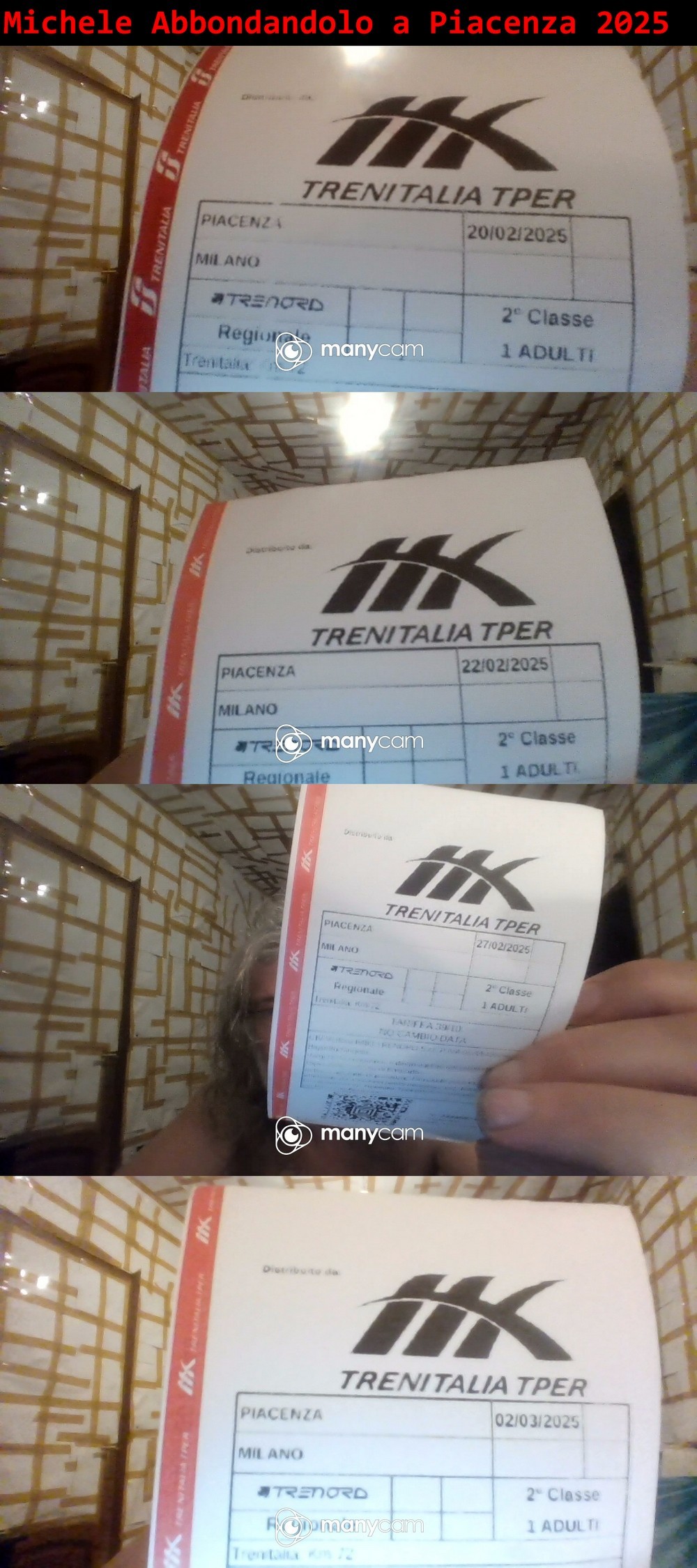
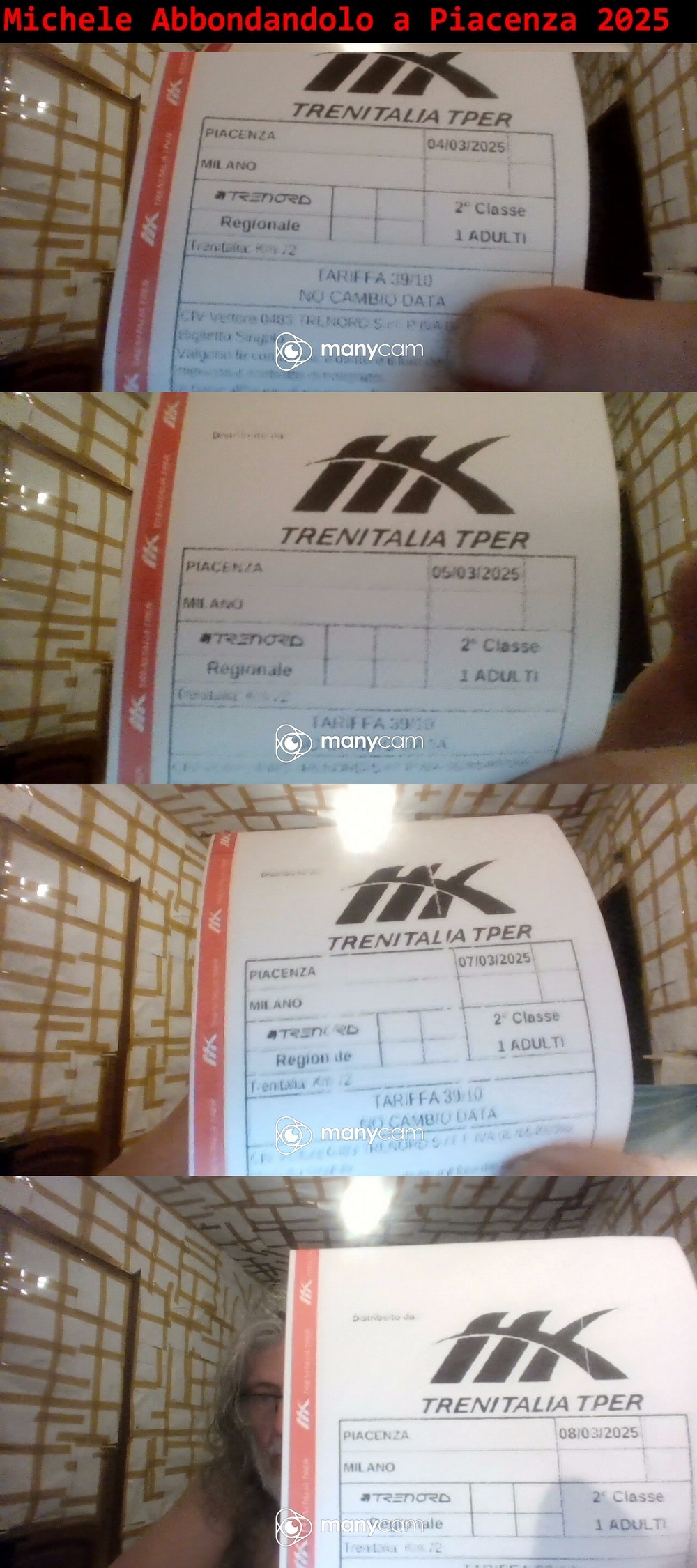

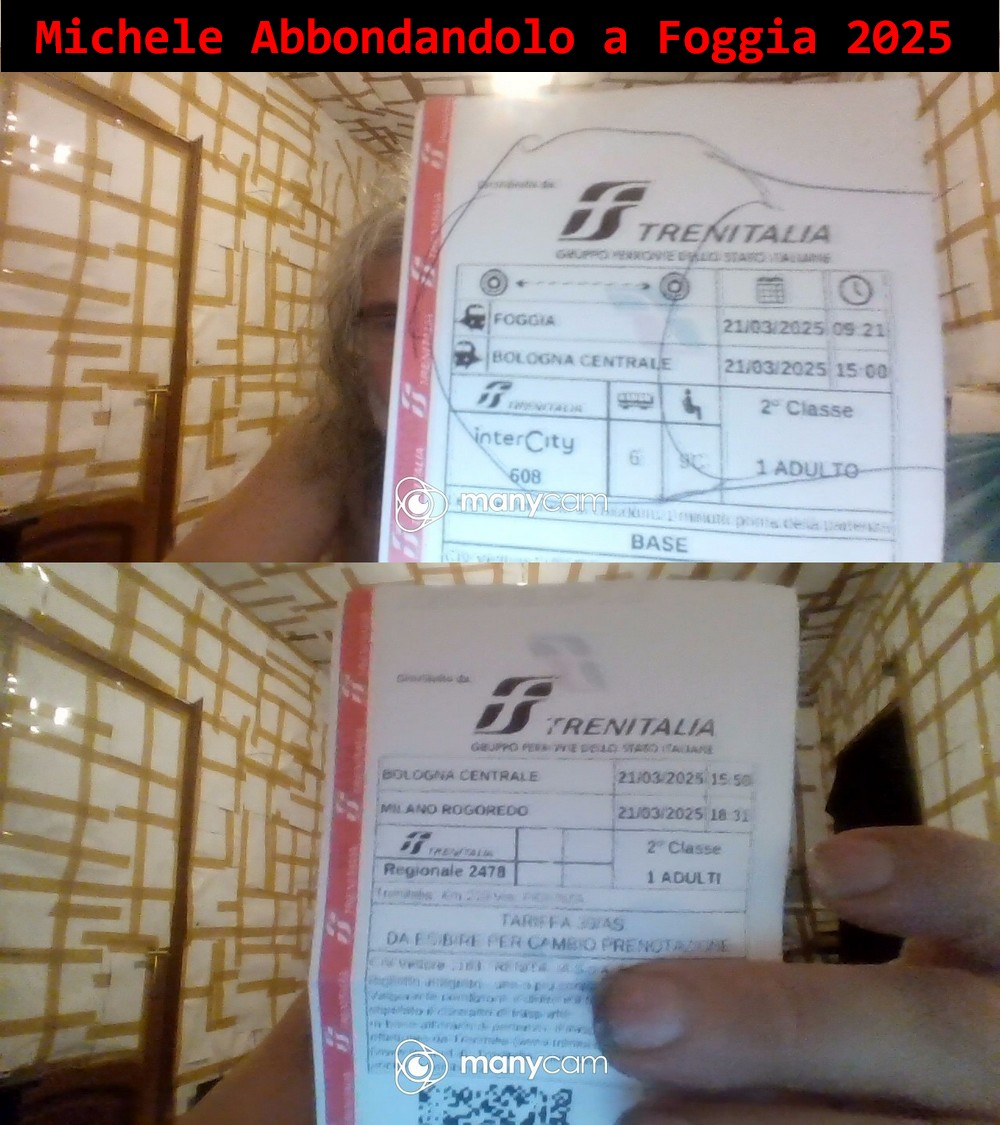
Mr. Michele Abbondandolo Houses.

Mr. Michele Abbondandolo 1 Time In Pavia, 1 Time In Lodi, 14 Times In Piacenza, 2 Times In Foggia During The Last 60 Days, Sunday 20 April 2025.
I Have 2 Houses, In Tremiti Street N.6 And In Guido Rossa Street N. 92 Well Described Since Years On The Page 2015 http://www.the-bulldog.com/Nelson.html And
I Had a Lot Of Cars, Since The November 2017 I Don't Have Cars Because I Am Always Been a Prudent Person:
1)I Was Menaced By COSA NOSTRA Of Aggression If I Go Another Time Inside The Assurance Office.
2) I Was Menaced By COSA NOSTRA Of A Car Accident With a TIR.
3) I Was Menaced By COSA NOSTRA That Was Much More Easier, For Them, The Simulation Of COSA NOSTRA Association If I Have Every Kind Of Car.
4) My Mother Had The Habit To Buy Me Another Car Since My First Car And, In The Above Condition In Which I Was Finished
Well Described On The Page http://www.the-bulldog.com/en/News.html, I Didn't' Want To Involve My Mother In Every Kind Of Risk Buying Me Another Car.
My Mother Was Paying The Car, The Assurance And The Machine Shop ... So Don't Find Other Reasons To Remain Without Car. I Thought That Was Dangerous To Go Inside The Assurance Office And After a While With My Car Stopped In Front Of My House Without Assurance I Have Demolished It.
In That Period I Met Cars That Were So Singulars
At The Point That I Have Thought To Make Them a Photo.


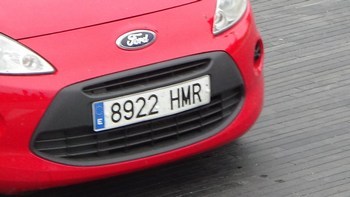


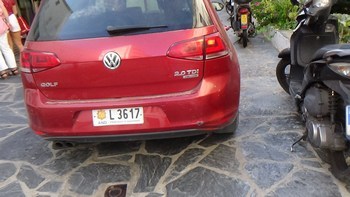
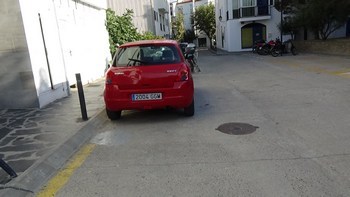
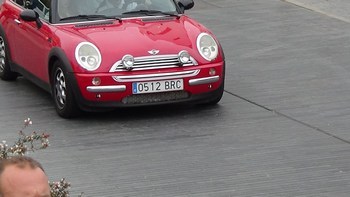


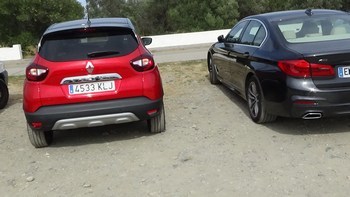
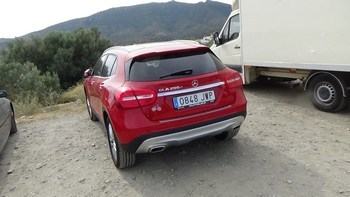
Universal Picture
- ___Hoaxer_
-

- __Page1
-

- Souvenirs Online
-

- ____ Hocum
-

- _____Grooming
-

- Homomorphism
-

- ____Houseboy
-

- ___Hooky
-

- ___House-Room
-

- _____Bull
-

- ____Hulking
-

- _____Hue
-

- ____Bulldog
-

- ____Hobby
-

- _____Bully
-

- ____Bullies
-

- ____Puppy
-

- ___Rules
-

- ___Hushed
-

- ____Skull
-

- ___Hygiene
-

- __Hygeian
-

- ___Illness
-

- ____Sickness
-

- ___Healing
-

- Book Exchange
-

- ____Cows
-

- Funny Calls
-

- ___Kennels
-

- ___Concerns
-

- _____Price
-

- ___Expo
-

- ____Girl
-

- ___Science
-

- ___For Sell
-

- ____Shop
-

- Cheap Puppy
-

- _____Clubs
-

- ____Looks
-

- ____Philosophy
-

- ____News
-

- Hoary
-

- Rearer
-

- Concise
-

- Mini-Bulldogs
-

- Skin
-

- Pup
-

- Bulldogs
-

- __Nelson
-

- ___Polly
-

-
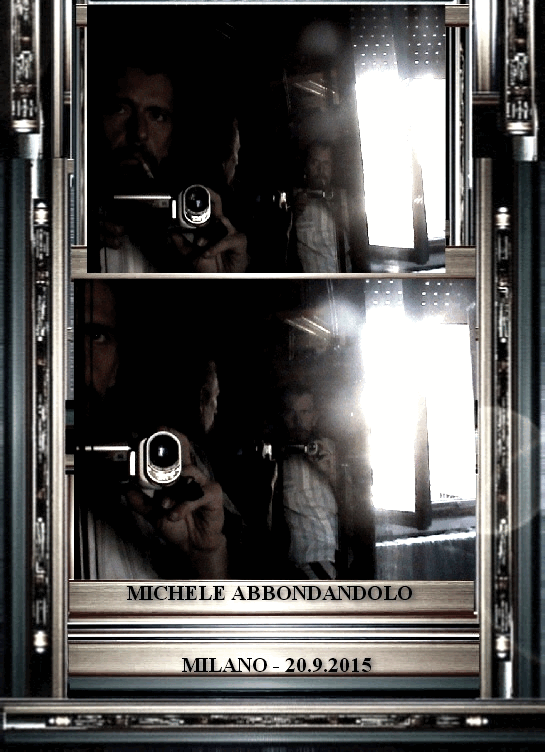


-

- ___Striker

-

